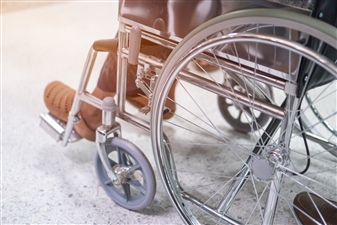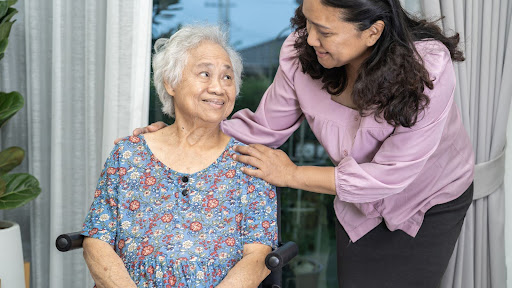How to Prevent Pressure Ulcers in the Elderly

Pressure ulcers are one of the most common ailments among the elderly, although a staggering 95% of pressure sores are preventable with the right kind of furniture. Given that the elderly demographic has a mortality rate of 60% when leaving with a pressure ulcer within one year of discharge, knowing how to ease this concern couldn’t be more imperative.
Whether you’re a care home professional or are looking after your elderly parents at home, learn more about pressure sores and how to prevent them.
What Causes Pressure Ulcers?
Pressure sores in the elderly are often a result of reduced mobility. Individuals with limited mobility often exert pressure on specific body parts for extended periods. This situation is particularly risky for individuals who are ill, confined to a bed, or use a wheelchair.
These are the top causes that put the elderly at risk of developing pressure ulcers:
- Limited mobility due to factors such as ageing, illness, unconsciousness, spinal injuries, or surgical recovery.
- Decreased body fat, which can reduce natural cushioning around one’s bones.
- Shifting one’s position in a bed or a chair, where skin traction disrupts blood flow (known as shearing).
- Skin irritation from friction, such as rubbing against bed linens.
- Being malnourished.
- Being dehydrated.
- Moisture on the skin - caused by sweating or incontinence, for instance.
- Fragile, thin, or dry skin.
- Pre-existing health issues such as diabetes.
- History or current experience of pressure sores.
- Tobacco use.
- Low red blood cell count (anaemia).
- Use of certain medications like chemotherapy, anti-inflammatory drugs, steroids, or anticoagulants.
- Significant mental health challenges.

How to Prevent Pressure Ulcers Amongst the Elderly
Care providers can intervene to shield elderly clients from pressure sores and the potential negative outcomes associated with them. These are some common preventive measures to keep in mind.
High-quality Furniture
People who are unwell and elderly are susceptible to sitting in awkward positions which can lead to poor posture and uneven weight distribution. This can be a particular issue when someone has a condition like pelvic obliquity. Weight can travel unevenly down the spine creating pressure and potentially pressure ulcers.
Care homes need to invest in high-quality chairs for the elderly to prevent the possibility of pressure sores. Patients sitting for long periods need chairs that can be adjusted to their unique size and allow for weight redistribution as needed. There are specific care home chairs that promote good posture and can help prevent pressure ulcers.
Physical Activity
Staying active is imperative as you age and chair-based exercises can really help. Elderly people need to move their legs and keep them elevated where possible to relieve pressure on the glutes. It’s important they keep moving in intervals so they’re not under duress for any length of time.
Wheelchair users need correct moulding on the seats as they sustain a lot of use. Diabetics are particularly vulnerable as it is hard for skin to heal once a pressure sore has developed so they have to be very careful, they are a priority in the care system. Healthcare chairs have special cushions with air that circulates with a ripple effect that benefits individuals with reduced mobility.
Balance and Gel Heels Relieve Blisters
An injury, even one as seemingly small as a blister can cause all sorts of issues when out in the wilds. Balance is an interesting perspective on blister prevention, if we are out of balance it may cause the body to lean more heavily or rely on an area more than usual. This might be caused by carrying a bag, sitting awkwardly, holding something with undue pressure, or wearing new shoes or high heels.
Knowing how to read one’s body is crucial in order to adjust one’s weight and attire accordingly to soothe blisters. Gel heels are a support and certainly can help with the downward pressure of high heels, or best of all investing in a good pair of well-fitting shoes. Covering a blister with Vaseline or a beeswax or emollient cream may help. Removing the source of the friction, if possible, also helps.
Maintain a Balanced Diet
Older adults should focus on consuming a well-rounded, healthy diet. Optimising nutrition is especially critical for clients with pressure sores, as it is essential for successful recovery. Furthermore, for those suffering from metabolic disorders such as diabetes, maintaining a healthy diet is crucial, affecting more than just the healing and prevention of pressure sores.
Set up Incentives for Active Prevention
The role of caregivers in preventing pressure sores in older adults is significant. Implementing a program that offers rewards based on your tracking of pressure sores could motivate caregivers to frequently reposition and actively minimise the occurrence of pressure sores in your facility.
Timely Care, Planning, and Assessment
Having a pressure ulcer risk assessment is crucial for the elderly. This is particularly important for anyone who has moved into a care home in the last six hours. A written plan should then be developed and reviewed for those who are assessed as being at risk of developing pressure sores. The plan should outline the steps needed to prevent an ulcer, including any extra pressure relief needed. The person’s own views and their ability to make a sound decision must also be taken into account.
Preventing pressure ulcers is a crucial aspect of healthcare, especially for those who are immobile or confined to sitting for long periods. While understanding the causes and implementing preventive practices are important, the choice of seating can play a pivotal role in safeguarding health. Our range of healthcare chairs is designed with the latest in ergonomic technology and therapeutic insights to ensure optimal comfort and support.
Back to blog posts